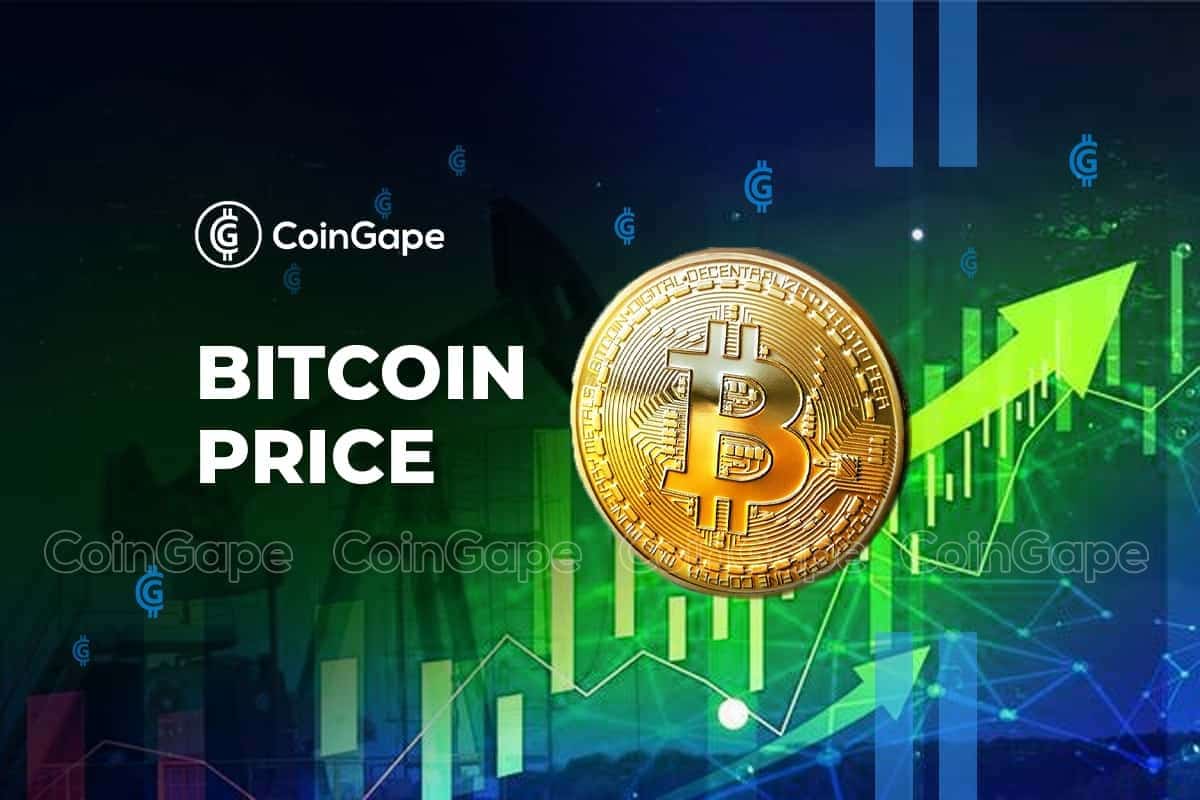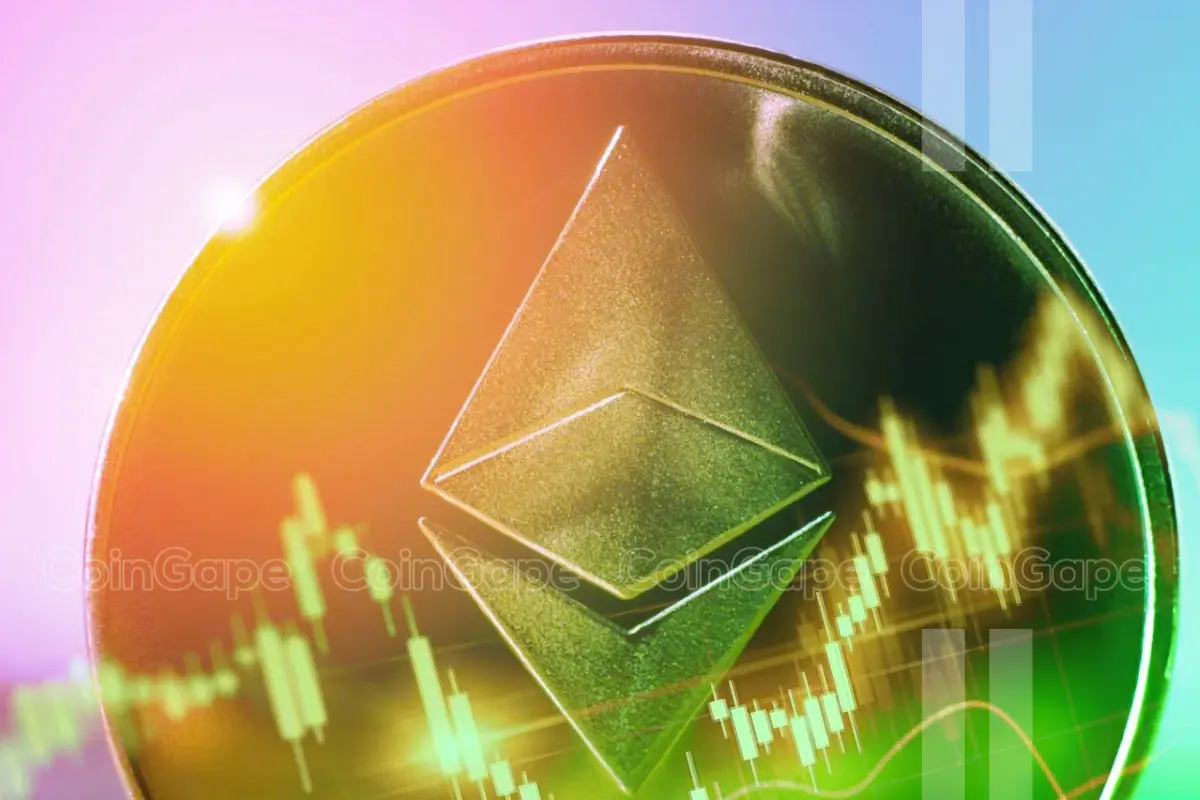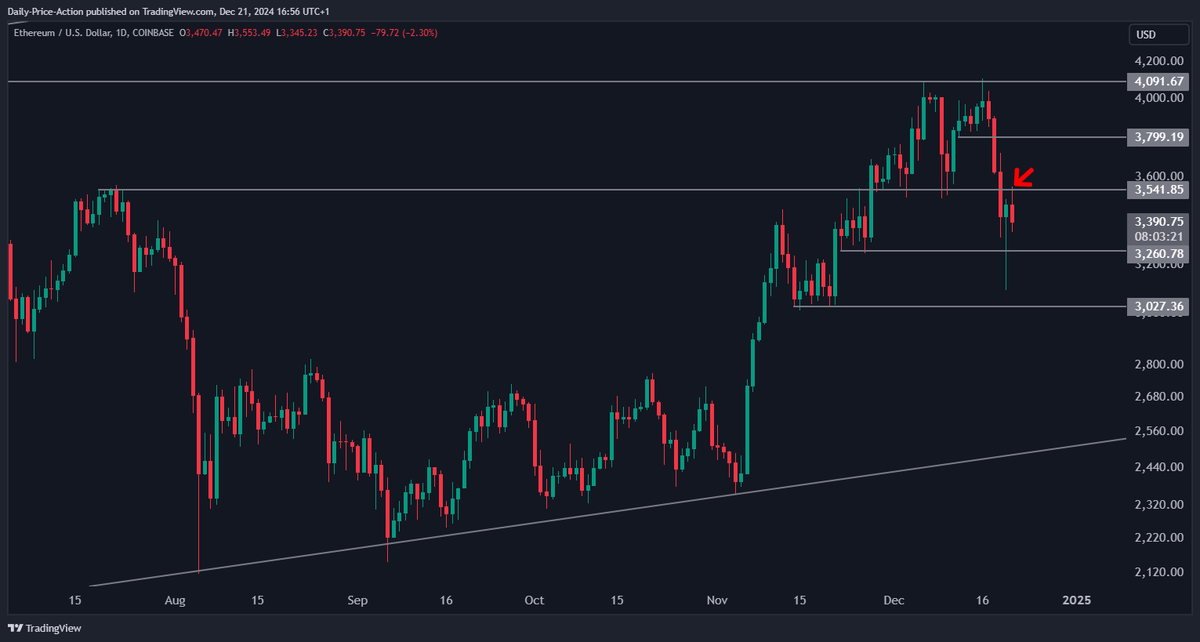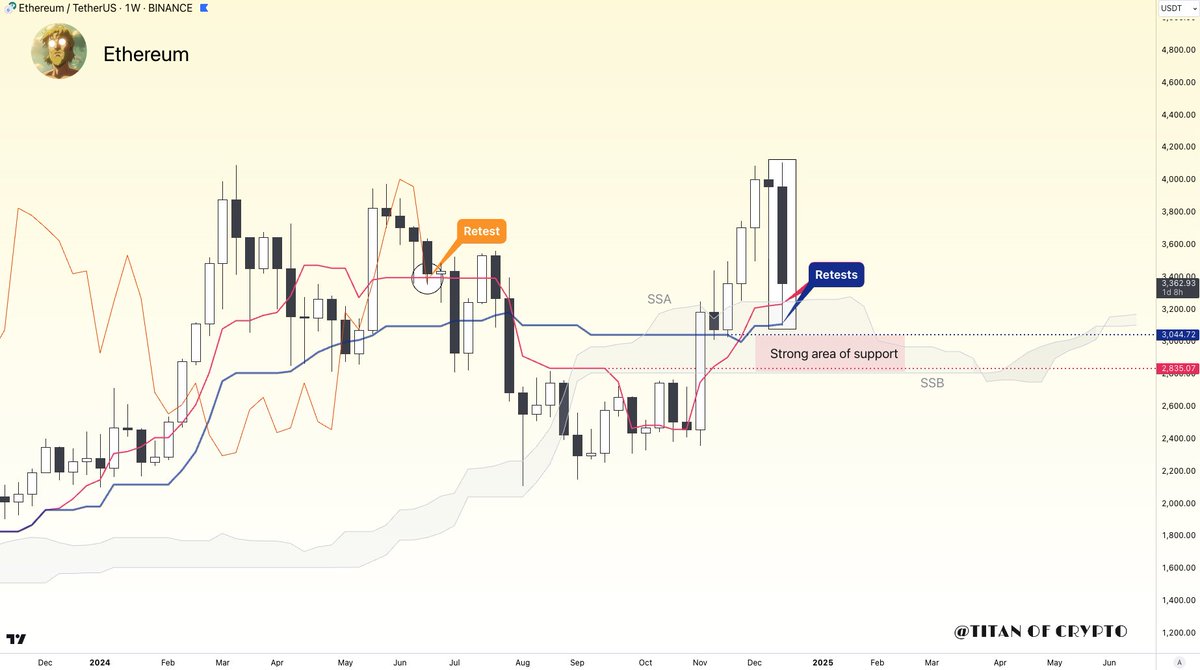24/7 Cryptocurrency News
5 Reasons Why Bitcoin Price Is Nearing Gold-Style ATH
Published
4 months agoon
By
admin
Bitcoin (BTC) price action has once again captured the financial world’s attention, nearing a gold-style all-time high (ATH) as its price surged to $59,800. With the recent rise in gold prices hitting $2,509.41 per ounce, parallels between these two assets have been drawn. Several factors are driving BTC rally, suggesting that a new ATH might be just around the corner. Here are five reasons why BTC is climbing toward this crucial milestone.
1. Whales Buy The Dip In Bitcoin Price
A significant factor fueling Bitcoin price surge is the continued drainage of BTC exchange balances. Also, BTC witnessed substantial accumulation by long-term holders, often referred to as “whales.” Over the last 30 days, exchanges have witnessed a reduction of 11,317.53 BTC.
It involved strategic withdrawals from major platforms like Coinbase Pro and Bitfinex, accounting for over 23,000 BTC accumulation, according to Coinglass data. Moreover, in the last seven days alone, the exchange balance has been reduced by 10,657.87 BTC. This massive outflow suggests that traders are moving their BTC holdings into cold storage, signaling a strong belief in its long-term value.
Furthermore, long-term holders have reportedly bought the dip with over 500,000 BTC accumulated since July 30. This accumulation phase by whales, who often influence market trends, indicates a robust bullish sentiment, further pushing BTC price toward its ATH.
2. Robust Bitcoin ETF Flows
Another key driver of the recent price momentum is the robust inflows into Bitcoin exchange-traded funds (ETFs). Spot Bitcoin ETFs saw a total inflow of $35.9 million on August 16 alone, continuing a week of positive flows amounting to $32.4 million.


Notably, BlackRock, Fidelity, Bitwise, and Ark contributed to this inflow with significant investments, totaling $20.4 million, $61.3 million, $12 million, and $13.4 million, respectively. However, Grayscale’s GBTC recorded massive outflows of $72.9 million in Friday. Nonetheless, the resilient performance of other ETFs is seen as a bullish sign.
These ETF flows reflect growing investor confidence in BTC as an asset class, with more investors seeking exposure through regulated financial products. The inflows into these ETFs provide additional liquidity and buying pressure, which in turn supports the upward trajectory of Bitcoin price.
3. Growing Institutional Adoption Of Bitcoin ETFs
Institutional adoption of Bitcoin ETFs has gained significant traction, as evidenced by recent filings and disclosures. Goldman Sachs, for instance, revealed in a 13F filing that it held substantial positions in various Bitcoin ETFs as of June 30. These included $238.6 million in iShares Bitcoin Trust, $79.5 million in Fidelity Bitcoin ETF, and other notable holdings.
Similarly, Morgan Stanley disclosed massive investments in the U.S. spot Bitcoin ETFs. The banking behemoth holds 5,500,626 shares of BlackRock iShares Bitcoin Trust, valued at $187.79 million. Also, pension funds are now considering these investments.
The involvement of major financial institutions like Goldman Sachs and Morgan Stanley in Bitcoin ETFs signals a strong endorsement of the crypto’s potential. Additionally, Framework Ventures co-founder Vance Spencer is bullish on BTC ETFs and expects institutional investment to surge.
4. Upcoming Elections & Bitcoin Price
As the US election cycle approaches, market sentiment is increasingly influenced by the political sector. Historically, elections have been pivotal moments for financial markets, often leading to increased volatility and strategic positioning by investors.
Meanwhile, presidential candidates like Donald Trump and Robert F. Kennedy Jr have expressed a pro-crypto stance. Whilst, Kamala Harris initiated a crypto reset move to end the hostile approach considered by Democratic leaders and Biden administration.
Some analysts, like Doctor Profit, believe that BTC could enter a price discovery phase post-election, potentially setting a new ATH. While the timing remains uncertain, the anticipation surrounding the elections adds to the bullish sentiment driving Bitcoin price to new highs like gold. Moreover, the analyst ditched the notion of a possible drop to the $40,000 level.
5. Fed Rate Cut Expectations
Finally, expectations of a potential Federal Reserve rate cut are providing a significant tailwind for Bitcoin price. With cooling inflation figures and dovish comments from Fed officials, market participants are increasingly betting on a rate cut at the upcoming FOMC meeting.
According to the CME FedWatch Tool, there is a 75% probability of a 25 basis point cut. Whilst, 25% market participants expect a 50 bps cut. A rate cut would likely weaken the US dollar and boost assets perceived as hedges against inflation, such as BTC. The possibility of looser monetary policy is thus another factor contributing to Bitcoin’s climb toward its ATH like gold.
Kritika Mehta
Kritika boasts over 2 years of experience in the financial news sector. Currently working as a crypto journalist at Coingape, she has consistently shown a knack for blockchain technology and cryptocurrencies. Kritika combines insightful analysis with a deep understanding of market trends. With a keen interest in technical analysis, she brings a nuanced perspective to her reporting, exploring the intersection of finance, technology, and emerging trends in the crypto space.
Disclaimer: The presented content may include the personal opinion of the author and is subject to market condition. Do your market research before investing in cryptocurrencies. The author or the publication does not hold any responsibility for your personal financial loss.
Source link
You may like


Top 4 Altcoins to Hold Before 2025 Alt Season


DeFi Protocol Usual’s Surge Catapults Hashnote’s Tokenized Treasury Over BlackRock’s BUIDL


DOGE & SHIB holders embrace Lightchain AI for its growth and unique sports-crypto vision


Will Shiba Inu Price Hold Critical Support Amid Market Volatility?


Chainlink price double bottoms as whales accumulate


Ethereum Accumulation Address Holdings Surge By 60% In Five Months – Details
24/7 Cryptocurrency News
Ripple Transfers 90M Coins, What’s Happening?
Published
7 hours agoon
December 22, 2024By
admin
XRP has regained its footing above the $2 support level, fueled by significant whale activity. In only 30 minutes, 90 tokens, worth approximately $202,5 million, were transferred to unknown wallets.
Ripple has emerged as one of the top post-election performers, quadrupling in value since November 5. This impressive rally, alongside gains in other cryptocurrencies, has spotlighted digital assets and fueled speculation about their potential trajectory heading into 2025.
XRP Whales Make Massive Moves, Sparking Price Speculation
XRP has regained its footing above the $2 support level, fueled by significant whale activity. In only 30 minutes, 90 tokens, worth approximately $202,5 million, were transferred to unknown wallets.
The unusually large withdrawals, flagged by Whale Alert, have sparked heightened interest among investors and increased speculation about the token’s future price movement.
🚨 🚨 🚨 🚨 40,000,000 #XRP (89,678,944 USD) transferred from #Ripple to unknown wallethttps://t.co/YmHOFWz1q9
— Whale Alert (@whale_alert) December 21, 2024
Whale Alert reveals that the recent XRP transfers consisted of two significant transactions. The largest involved 50 million tokens, valued at approximately $112.5 million, moved to a newly created wallet. The second transaction saw 40 million tokens worth $90 million sent to a recently activated address.
🚨 🚨 🚨 🚨 🚨 50,000,000 #XRP (111,697,462 USD) transferred from #Ripple to unknown wallethttps://t.co/nWwkUGOhWA
— Whale Alert (@whale_alert) December 21, 2024
The destination wallets are not linked to any known cryptocurrency exchanges, leading investors to speculate that high-net-worth individuals or institutional investors may be accumulating Ripple. This has fueled expectations of further price movement. Also, recently, renowned hedge fund manager Scott Melker has revealed that former President Donald Trump is actively accumulating XRP and HBAR tokens.
Crypto analysts think that large transfers to exchanges from unknown wallets are often a bullish indicator. This is a signal that the whales-the major holders-are moving their holdings to cold storage, which typically reflects a long strategy, rather than short-term selling. This can set up a positive outlook for the cryptocurrency’s price. However, the reversal situation results usually with reversal outcome so it’s interesting the price is still on the rise.
This development comes as a US appeals court announces the filing deadlines for the opening and reply briefs by Ripple and its CEO, Brad Garlinghouse.
Holding Steady at Key Support, Awaiting Next Move
XRP and the broader cryptocurrency market have remained relatively flat in recent days, with the token holding critical support levels that could spark a renewed uptrend. At the time of writing, XRP was trading at $2.25, reflecting a slight 0.35% rise over the past 24 hours.
If the bulls stay in control, Ripple may continue its upside, having key resistances between $3.62 and $4.30. A break above such a range could send prices towards $5.73. At 46, though, the RSI rests, showing that sellers have still managed to be at the helm and cap upside momentum. Increased buying pressure will, thus, be critical for resuming the uptrend.
The Awesome Oscillator supports a bullish divergence with the histogram bars turning positive, yet still remaining in negative territory. This indeed would hint at a possible reversal, though additional buying pressure needs to be generated to confirm the uptrend.
The critical support level that traders should watch is at $2.20. A drop below this might set off panic and send prices lower.
In spite of this uncertainty and the possible bearishness of it all, this token is still attracting a great deal of interest from institutional investors-a fact that points to its long-term potential.
Teuta Franjkovic
Teuta is a seasoned writer and editor with over 15 years of expertise in macroeconomics, technology, and the crypto and blockchain sectors.
She began her career in 2005 as a lifestyle writer for *Cosmopolitan* before transitioning to business and economic reporting for renowned outlets like *Forbes* and *Bloomberg*.
Inspired by thought leaders like Don and Alex Tapscott and Laura Shin, Teuta embraced blockchain’s potential, viewing cryptocurrency as one of humanity’s most transformative innovations.
Since 2014, she has specialized in fintech, focusing on crypto, blockchain, NFTs, and Web3. Known for her strong collaboration and communication skills, Teuta also holds dual MAs in Political Science and Law.
Disclaimer: The presented content may include the personal opinion of the author and is subject to market condition. Do your market research before investing in cryptocurrencies. The author or the publication does not hold any responsibility for your personal financial loss.
Source link
24/7 Cryptocurrency News
How Low Will Ethereum Price Go By The End of December?
Published
10 hours agoon
December 22, 2024By
admin
In a recent analysis, crypto analyst Justin Bennett provided insights into how low the Ethereum price could drop by the end of December. This came as the analyst revealed that buyers need to step or ETH could enter next week with a bearish outlook.
How Low Ethereum Price Can Go By Year-End
In an X post, Justin Bennett suggested that the Ethereum price could drop to as low as $3,027 by year-end. While analyzing ETH’s daily chart, the analyst stated that ETH needs to flip $3,541 as support to turn bullish next week. If that doesn’t happen, he remarked there is a decent chance that Ethereum drops lower. The analyst’s accompanying chart showed that ETH could even drop to as low as $2,560 if it loses the $3,027 support level.
In an earlier X post, the crypto analyst stated that he is bullish on the Ethereum price based on the overall setup going into 2025. however, he believes that buyers still have work to do. He gave an example of how ETH needs to recover $3,540 on the weekly time frame to look bullish next week.
These buyers already look to be stepping in, as there has been an accumulation trend among ETH whales. Coingape reported that Ethereum whales are buying the dip as ETH eyes a quick rally to $4,000.
These whales have withdrawn 17,698 ETH worth $61.66 million from the crypto exchange Binance. Donald Trump’s World Liberty Financial has also gotten in on the act as the DeFi project accumulated more ETH on this dip.
Correction Might Be Over
In an X post, crypto analyst Titan of Crypto provided a more bullish outlook for the Ethereum price, stating that the correction might be over. The analyst made this statement based on his Ichimoku cloud analysis.
Titan of Crypto stated that Ethereum has retested both Tenkan and Kijun. He added that the worst-case scenario would be a retest of the Kumo Cloud SSB, Ichimoku’s strongest line.
According to a CoinGape market analysis, this might indeed be the last dip before ETH hits five digits. There are predictions that the Ethereum price could hit $15,937 by May 2025.
Boluwatife Adeyemi
Boluwatife Adeyemi is a well-experienced crypto news writer and editor who has covered topics that cut across DeFi, NFTs, smart contracts, and blockchain interoperability, among others. Boluwatife has a knack for simplifying the most technical concepts and making it easy for crypto newbies to understand. Away from writing, He is an avid basketball lover and a part-time degen.
Disclaimer: The presented content may include the personal opinion of the author and is subject to market condition. Do your market research before investing in cryptocurrencies. The author or the publication does not hold any responsibility for your personal financial loss.
Source link
24/7 Cryptocurrency News
BTC Below $97K, SOL Drops 7%, WIF Falls 13%
Published
13 hours agoon
December 22, 2024By
admin
Crypto prices today are showing bearish momentum as Bitcoin (BTC) dropped below the $97K level, marking a sharp decline from its $108K all-time high earlier this week. The BTC price hit a low of $92K, reflecting significant volatility. Major altcoins followed the downtrend, with Ethereum (ETH) down 4% and Solana (SOL) dropping 7% in the last 24 hours. dogwifhad (WIF) became the worst performer, losing 13% in the same period.
The global crypto market capitalization fell by approximately 2%, now at $3.34 trillion. Trading volume also dropped significantly and down by 44% to $170 billion. The Fear and Greed Index currently reads 59, indicating a neutral market sentiment despite the recent declines.
Crypto Prices Today: BTC Slumps, ETH, SOL, and XRP See Significant Declines
BTC price saw a sharp decline this week, falling below $97K. XRP dropped by 3%, while Solana (SOL) emerged as the worst performer in the top 10 coins. Meme coins also followed Bitcoin’s bearish path, with losses ranging from 3% to 5%.
Bitcoin Price Today
BTC price was trading at $96,760, showing a decrease of approximately 1% in the last 24 hours. Its 24-hour low and high were $96,457 and $99,538, respectively. The market capitalization stands at $1.91 trillion, with $50 billion in trading volume, and Bitcoin’s market dominance is at 57.60%. Despite the recent drop, Bitcoin ETFs saw an inflow of $449 million this week, according to SoSo Value.
In a significant development, Senator Cynthia Lummis confirmed that the U.S. will hold a strategic Bitcoin reserve for at least 20 years as part of efforts to reduce the national debt. This move is expected to have long-term implications for both the market and Bitcoin’s role in global finance.
Ethereum Price Today
ETH price was trading at $3,321, marking a 4% drop in the last 24 hours. Its 24-hour low and high were $3,294 and $3,554, respectively. The market capitalization stands at $400 billion, with $30 billion in trading volume. Ethereum ETFs saw an inflow of $62 million over the past week. Crypto analyst Justin Bennett has also shared insights on how low Ethereum’s price could go by the end of December.
XRP Price Today
XRP price was trading at $2.20, down 3% in the last 24 hours. Its 24-hour low and high were $2.10 and $2.38, respectively. The market capitalization stands at $126 billion, with $14 billion in trading volume. In other news, Ripple transferred 90 million XRP coins to an unknown wallet, raising speculation within the crypto community.
Solana Price Today
SOL price was trading at $182, reflecting a 7% drop in the last 24 hours. Its 24-hour low and high were $178 and $201, respectively. The market capitalization stands at $86 billion, with $5 billion in trading volume. Solana’s significant decline makes it one of the worst performers among the top 10 cryptocurrencies. In other news, a Solana whale has accumulated 1.7 million SOL after the recent dip in the crypto market.
Meme Crypto Prices Today
Meme coins also showed bearish momentum in crypto prices today, with the top meme coin DOGE down by approximately 3%, trading at $0.3179. Shiba Inu (SHIB) price dropped by 4% in the same period, trading at $0.00002166. Crypto analyst “Dollars Maker” shared insights into a potential 235% surge, projecting SHIB to reach $0.00005816. Other notable meme coins, including PEPE, BONK, and WIF, also saw declines ranging from 3% to 12% in the last 24 hours, following the broader crypto market trends.
Top Crypto Gainer Prices Today
Hyperliquid
Hyperliquid (HYPE) price became the top performer today, rising 8% in the last 24 hours. It was trading at $34.67, with its 24-hour low and high being $30 and $35, respectively. Hyperliquid token achieved another major milestone, as within three weeks of its launch, the HYPE price surged to $34.71, pushing its market cap to $10 billion.
Top Crypto Loser Prices Today
dogwifhat
The dogwifhat (WIF) token became the worst performer for today in crypto prices today, experiencing a 13% drop in price. It was trading at $1.88, with a 24-hour low and high of $1.80 and $2.24, respectively. The market capitalization stands at $1.88 billion, highlighting the significant decline in its value during this period.
Ethena
Ethena (ENA) price dropped by 11% in crypto prices today, now trading at $1.02. Its 24-hour low and high were $0.99 and $1.21, respectively. The market capitalization stands at $3 billion, with a trading volume of $820 million, reflecting a significant decline in its value. In related news, Arthur Hayes sold his ENA tokens sparking further market speculation.
Additionally, the hourly chart looks bearish, with both Bitcoin (BTC) and major cryptocurrencies like Ethereum (ETH) and XRP down by half a percent in the last hour, continuing the downtrend seen in crypto prices today.
Coingape Staff
CoinGape comprises an experienced team of native content writers and editors working round the clock to cover news globally and present news as a fact rather than an opinion. CoinGape writers and reporters contributed to this article.
Disclaimer: The presented content may include the personal opinion of the author and is subject to market condition. Do your market research before investing in cryptocurrencies. The author or the publication does not hold any responsibility for your personal financial loss.
Source link

Top 4 Altcoins to Hold Before 2025 Alt Season

DeFi Protocol Usual’s Surge Catapults Hashnote’s Tokenized Treasury Over BlackRock’s BUIDL

DOGE & SHIB holders embrace Lightchain AI for its growth and unique sports-crypto vision

Will Shiba Inu Price Hold Critical Support Amid Market Volatility?

Chainlink price double bottoms as whales accumulate

Ethereum Accumulation Address Holdings Surge By 60% In Five Months – Details

Ripple Transfers 90M Coins, What’s Happening?

Filecoin, Monero, and Lunex dominate smart investor portfolios

Bitwise CIO Matt Hougan Predicts Institutional Interest in Altcoins, Says 2025 the Year of Crypto Diversification

How Low Will Ethereum Price Go By The End of December?

Analyst says buying this altcoin at $0.15 could be as profitable as buying ETH at $0.66

BTC Below $97K, SOL Drops 7%, WIF Falls 13%

AI Won’t Tell You How to Build a Bomb—Unless You Say It’s a ‘b0mB’

A quest for crypto with higher growth potential in 2025

Veteran Trader Peter Brandt Predicts New Bitcoin Price Target
182267361726451435

Why Did Trump Change His Mind on Bitcoin?

Top Crypto News Headlines of The Week

New U.S. president must bring clarity to crypto regulation, analyst says

Will XRP Price Defend $0.5 Support If SEC Decides to Appeal?

Bitcoin Open-Source Development Takes The Stage In Nashville

Ethereum, Solana touch key levels as Bitcoin spikes

Bitcoin 20% Surge In 3 Weeks Teases Record-Breaking Potential

Ethereum Crash A Buying Opportunity? This Whale Thinks So

Shiba Inu Price Slips 4% as 3500% Burn Rate Surge Fails to Halt Correction

Washington financial watchdog warns of scam involving fake crypto ‘professors’

‘Hamster Kombat’ Airdrop Delayed as Pre-Market Trading for Telegram Game Expands

Citigroup Executive Steps Down To Explore Crypto
Mostbet Güvenilir Mi – Casino Bonus 2024

NoOnes Bitcoin Philosophy: Everyone Eats
Trending

 3 months ago
3 months ago182267361726451435

 Donald Trump5 months ago
Donald Trump5 months agoWhy Did Trump Change His Mind on Bitcoin?

 24/7 Cryptocurrency News4 months ago
24/7 Cryptocurrency News4 months agoTop Crypto News Headlines of The Week

 News4 months ago
News4 months agoNew U.S. president must bring clarity to crypto regulation, analyst says

 Price analysis4 months ago
Price analysis4 months agoWill XRP Price Defend $0.5 Support If SEC Decides to Appeal?

 Opinion5 months ago
Opinion5 months agoBitcoin Open-Source Development Takes The Stage In Nashville

 Bitcoin5 months ago
Bitcoin5 months agoEthereum, Solana touch key levels as Bitcoin spikes

 Bitcoin5 months ago
Bitcoin5 months agoBitcoin 20% Surge In 3 Weeks Teases Record-Breaking Potential





✓ Share: